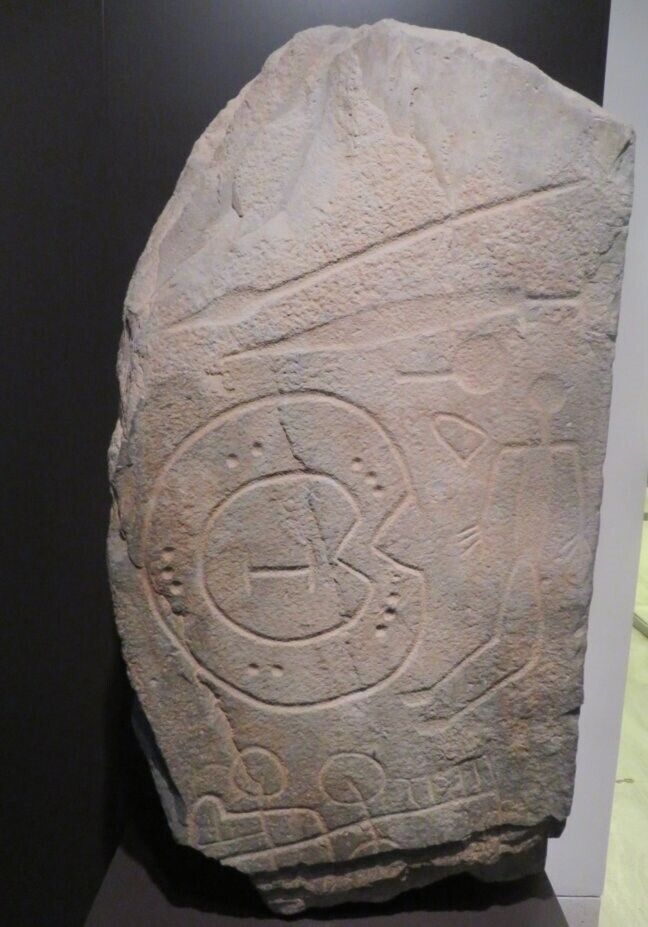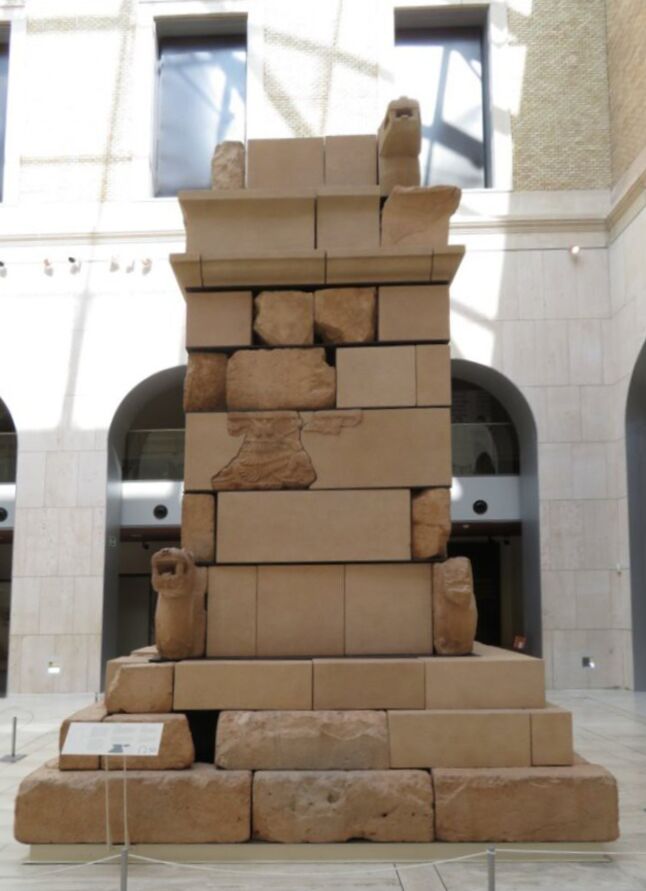Many centerpieces of Europe’s grand archaeological museums are artifacts uncovered in Middle Eastern expeditions. Blockbuster artifacts like the Louvre’s Code of Hammurabi or the British Museum’s Cyrus Cylinder were not found in the countries they reside in today but are from the mysterious Orient. Spain’s National Archaeological Museum (Museo Arqueológico Nacional, or man) is different. Its focus is not on exotic relics from Egypt or Iraq but on local objects from the Stone Age to medieval Islamic rule.
Considering biblical archaeology generally refers to the lands of the Bible (namely the Middle East), one would think man would be an unlikely place to find biblical artifacts. Yet Spanish history has a surprising connection to the Bible—and the local artifacts in Spain’s archaeological museum can affirm this. While there are no artifacts like the Mesha Stele or Sennacherib’s prisms, there are plenty of artifacts reflecting general cultural practices that correlate with those described in the Bible.
The Warrior Stelae
A large number of stelae dating to the Late Bronze Age were discovered in southwestern Spain. These stelae depict various warrior figures, sometimes shown wearing a horned helmet or equipped with other instruments of war, such as swords, spears and shields. Over 100 of these stelae have been discovered.
On one such stele, the warrior is shown with a Mediterranean-style chariot. The image, however, is erroneous: The wheels were placed on the wrong portion of the chariot. Archaeologists suspect whoever designed the stele never saw a chariot for himself. In other words, the motifs of the stele have influences from abroad—specifically, from the east. The stele was found in the Cáceras province closer to Madrid and the center of the country rather than the southern coast.

It is important to note that “Bronze Age” means different years in different parts of the world. It is generally defined as between the time from mass production of copper objects to mass production of iron objects. In the Middle East, the Bronze Age is generally dated from about 3000 b.c.e. to 1200 b.c.e. But in much of Europe (including Spain), the Bronze Age isn’t considered to have ended until well into the first millennium b.c.e.
Scholars date these “warrior” stelae to the ninth and eighth centuries b.c.e. (900–700 b.c.e.), the time immediately after kings Solomon and Hiram would have been on the scene (mid-900s b.c.e.). Many skeptics of the biblical account believe the Phoenicians did not start colonizing Spain until several centuries after Solomon, beginning around the year 800 b.c.e. The warrior stelae show that there was a cultural influence potentially as early as a century before that. And considering the iconography would have been familiar to the ancient Iberians before the stelae were set up, the stelae could imply an even earlier cultural exchange. The fact that some of the stelae were found so far inland suggests how pervasive this influence would have been.
Meanwhile, stelae depicting similarly designed horned figures have also been found in the Mediterranean. A stele found in Bethsaida in northern Galilee, dated to the mid-to-late eighth century b.c.e., is the only example found in the Holy Land. But two similar stelae have been found in southern Syria, and one in Harran in southern Turkey. Scholars estimate these stelae are supposed to depict some sort of Levantine pagan deity.
The Gold of Tarshish
Some of the most exquisite objects found in ancient Tarshish are various examples of goldwork. A set of golden candlesticks is believed to represent a deity related to trees. The set dates from between the eighth and seventh centuries b.c.e. and was found near Seville.
A golden belt discovered in a funerary trove depicts a hero (identified as Melqart) fighting a lion, along with the characteristic Phoenician sphinx. Like some of the warrior stelae, this belt was found far inland.
The Bible mentions Solomon hiring Phoenician craftsmen and utilizing Phoenician supplies in constructing God’s temple in Jerusalem. Gold isn’t mentioned as a commodity he requested from the Phoenicians, yet gold was a vital part of the temple: “And the whole house he overlaid with gold, until all the house was finished; also the whole altar that belonged to the Sanctuary he overlaid with gold” (1 Kings 6:22). The Bible states that King David had gold collected before Solomon’s reign (1 Chronicles 22:14). Considering Israel’s trade links with Tyre, it is logical that some of this gold could have come from Tarshish.
Shekels of Silver
With Phoenician business came Phoenician business practices. Historians believe the first official minted currency in the ancient Mediterranean was in sixth-century b.c.e. Lydia (modern-day Turkey). Hacksilver proceeded minted coins. The silver’s value was based on the weight of the collective hoard of silver fragments. For example, in Genesis 23:16, Abraham purchased a plot of land for 400 shekels, a shekel being a unit of weight roughly equivalent to 9 grams.
Spain’s National Archaeological Museum displays the “Driebes Hoard,” found just outside Madrid. According to the museum, the hoard of hacksilver was hidden in the late third or early second century b.c.e. by the Carpetani, a pre-Roman Celtic group in the Iberian Peninsula. The hoard shows that hacksilver was still being used well into the first millennium b.c.e.
As society developed during what we call “classical antiquity,” the use of hacksilver gave way to coins and official currency. Meanwhile, as the Phoenician heartland in modern Lebanon fell subject to foreign rulers, the colonies in the western Mediterranean banded together to form a new civilization: ancient Carthage. Based in North Africa, the Semitic-speaking Carthaginians controlled much of southern Spain until the Roman conquest.
Like their contemporary Greeks and Romans, the Carthaginians minted their own coins. But old habits apparently die hard. Spain’s archaeological museum has several examples of their currency—a silver coin they called a “shekel.”
The Pozo Moro Monument
man’s centerpiece is the Pozo Moro Monument, a massive sixth-century b.c.e. mausoleum constructed with ashlar stones and covered in religious iconography, originally found disassembled in a necropolis near Valencia. The structure may have had a second story and may have been as much as 10 meters tall. Much of the current edifice is reconstructed. Scholars are divided as to whether it was built by Phoenicians or native Iberians. But the mausoleum certainly has Near Eastern influence.

One of the most intriguing reliefs is on the sixth row of the monument’s east side, where a monster or demon holding a knife is depicted. Directly in front of him is a small figure on a pedestal interpreted as a child ready to be sacrificed. On the left of the image is another supernatural being with a child in a bowl, apparently about to be devoured. Child sacrifice was one of the grislier sins God condemned the Israelites for partaking in. Deuteronomy 18:10 forbade an Israelite from causing “his son or his daughter to pass through the fire.” Verse 9 states that such a practice was among “the abominations of those nations” who were in the land before the Israelites, including the Phoenicians.
Another relief on the west side depicts a goddess with stylistic similarity to the Egyptian sky goddess Hathor. Behind her wing is a tree with a curiously curved top.
Compare this with man’s fifth-century b.c.e. funerary stele from Andalusia: A motif similar in design to the tree on the Pozo Moro Monument is found on the back of the stela. man identifies this symbolism as representing a “tree of life.”
Such trees were common themes in Phoenician art. At the Large Stone Structure (palace of David) in Jerusalem, a similarly designed column capital with palm volutes was discovered by Kathleen Kenyon in 1963. These so-called proto-Aeolic capitals have been found all over the Levant. The Bible lists Hiram’s Phoenicians as the constructors of David’s palace (2 Samuel 5:11). The Phoenicians evidently brought their artistic tastes with them when they sailed to Spain.
Biblical Archaeology in Spain
Pagan idols and human sacrifice may not be the most inspiring aspects of biblical archaeology. But Spain’s National Archaeological Museum collection illustrates a remarkable truth. Spain—on the other side of the known world from Israel—would probably be the last place anybody would expect to find significant biblical archaeological remains, yet so much of early Spanish history can be explained by using the Bible. Many of the objects in man’s collection would probably be hard to interpret otherwise.
The Bible is a book primarily about the people of Israel. But that doesn’t mean it can’t be used to explain history—even foundational history—in other parts of the world. The displays at Spain’s National Archaeological Museum demonstrate this. Even if the history displayed points to aspects of the past not particularly admirable, the Bible becomes a great unifier of mankind. In this sense, the Bible becomes the foundational text of many more civilizations than meets the eye. This includes the Spanish.